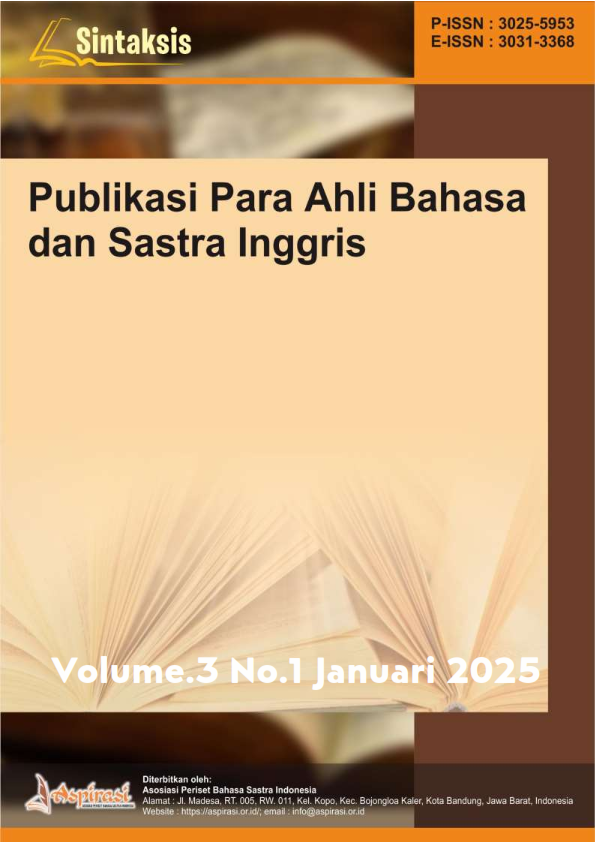The Mood, Atmosphere And Tone In The Novel; Socio-Economic Issues In The Novel
DOI:
https://doi.org/10.61132/sintaksis.v3i1.1292Keywords:
Mood, Tone, Atmosphere, Socio-economic issues, The Great Gatsby, Jazz Age, Social criticism, F. Scott FitzgeraldAbstract
This article investigates the use of mood, atmosphere, and tone in F. Scott Fitzgerald's novel The Great Gatsby, as well as the socio-economic issues discussed therein, including gender, race, and social class. This research also investigates how Fitzgerald uses these narrative elements to criticize the American Dream and emphasize social inequality in the United States during the Jazz era. This novel tells of the sadness, emptiness, and dissatisfaction hidden behind the outer luxury and glamour. The results of the analysis show that The Great Gatsby shows a sharp criticism of socio-economic injustice and unrealistic expectations in society at that time. These things are still relevant for today's society
Downloads
References
Churchwell, S. (2013). Careless people: Murder, mayhem, and the invention of The Great Gatsby. Retrieved from
Fetterley, J. (1999). The resisting reader: A feminist approach to American fiction. Retrieved from https://www.scribd.com/document/587353139/Judith-Fetterley-The-Resisting-Reader-a-Feminist-Approach-to-American-Fiction-NetLibrary-Inc-1999
Fitzgerald, F. S. (1925). The Great Gatsby.
https://www.theguardian.com/books/2013/jun/29/careless-people-sarah-churchwell-review
Nowlin, M. (2007). F. Scott Fitzgerald's racial angles and the business of literary greatness.
Downloads
Published
How to Cite
Issue
Section
License
Copyright (c) 2024 Sintaksis : Publikasi Para ahli Bahasa dan Sastra Inggris

This work is licensed under a Creative Commons Attribution-ShareAlike 4.0 International License.





